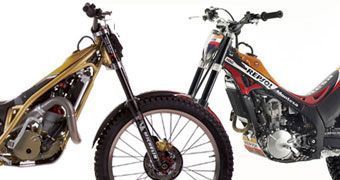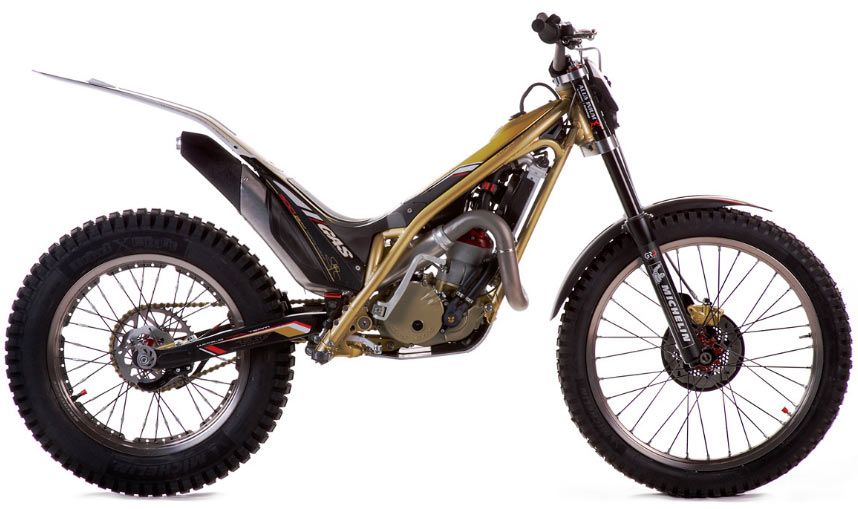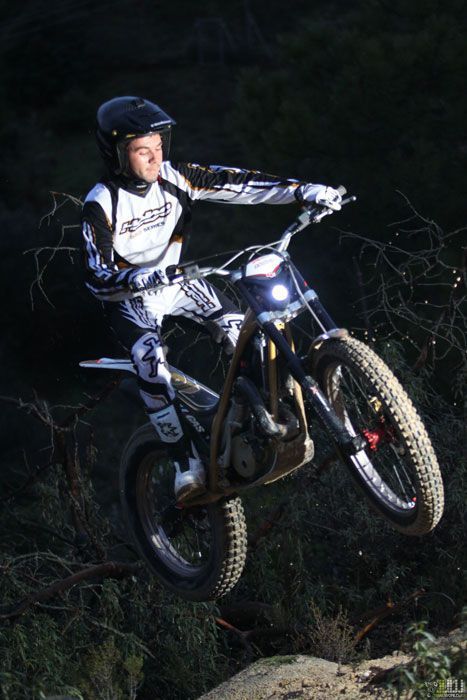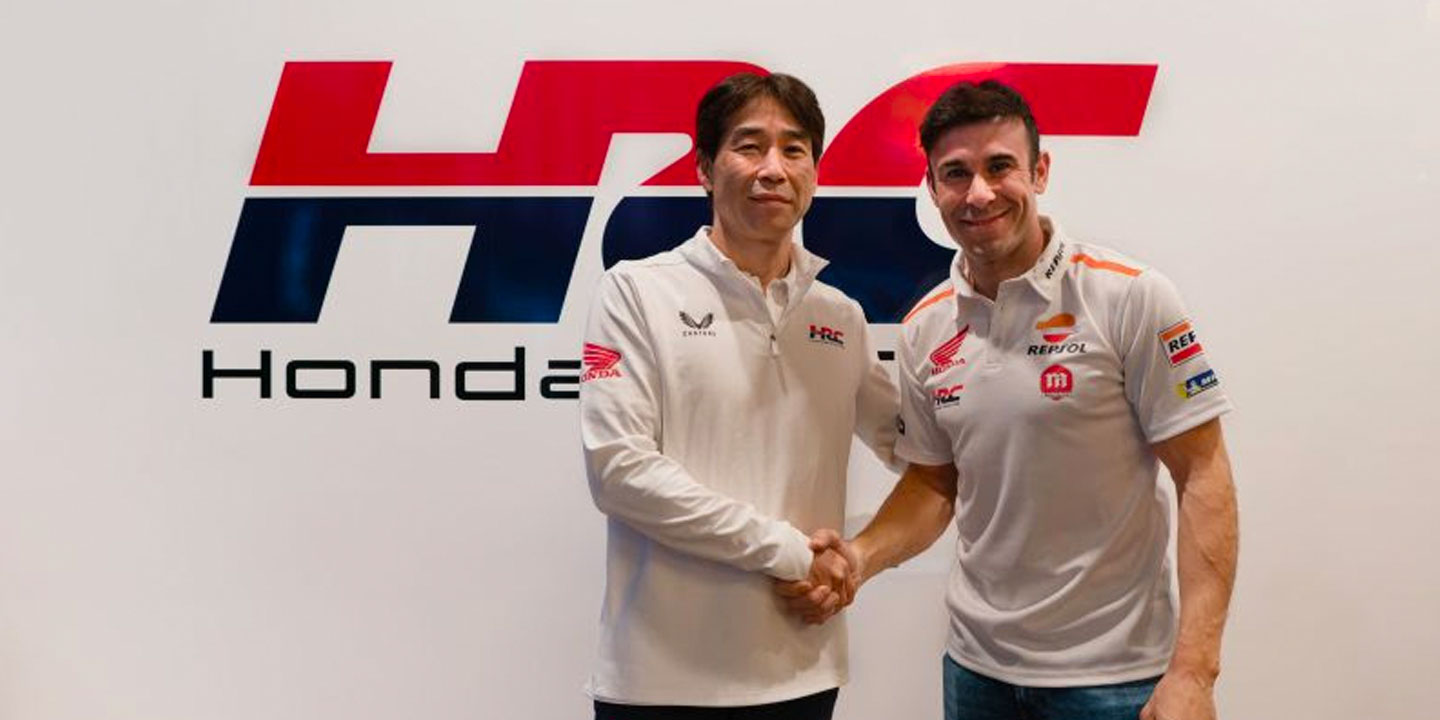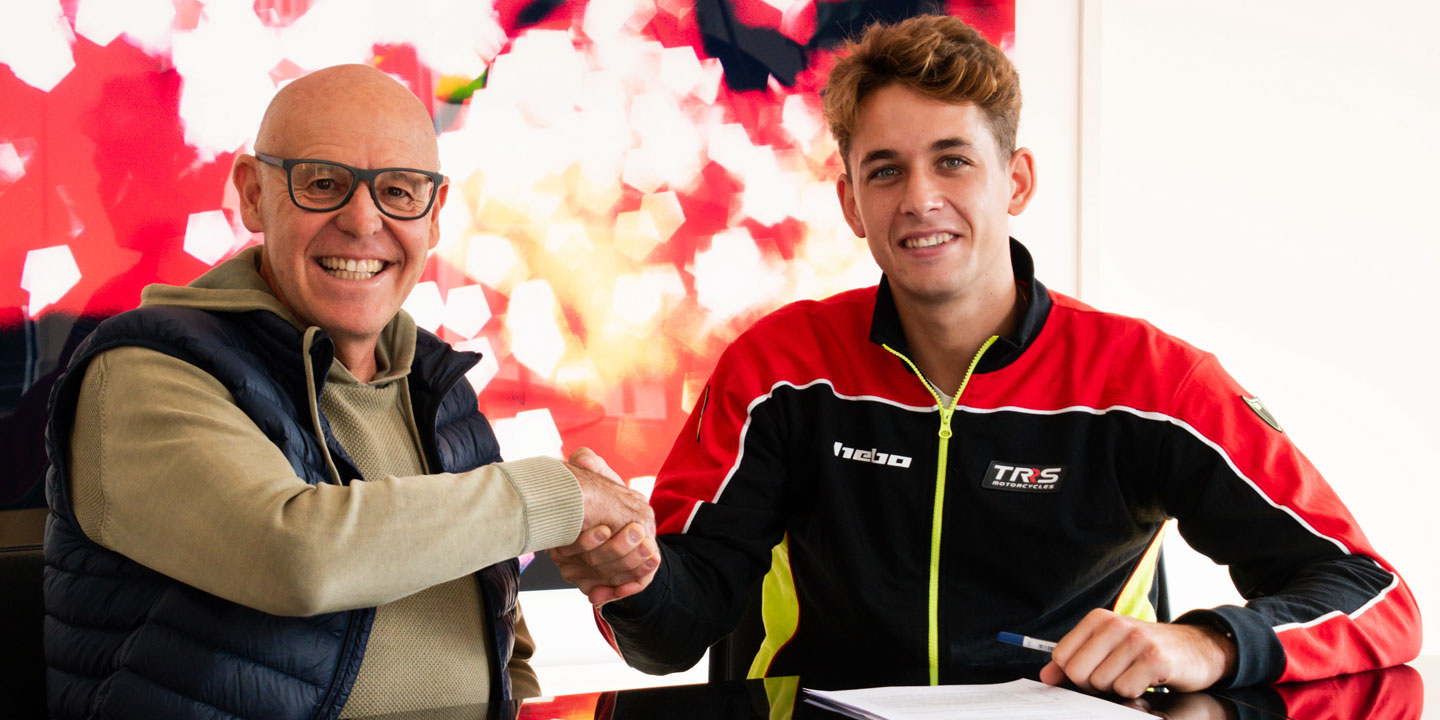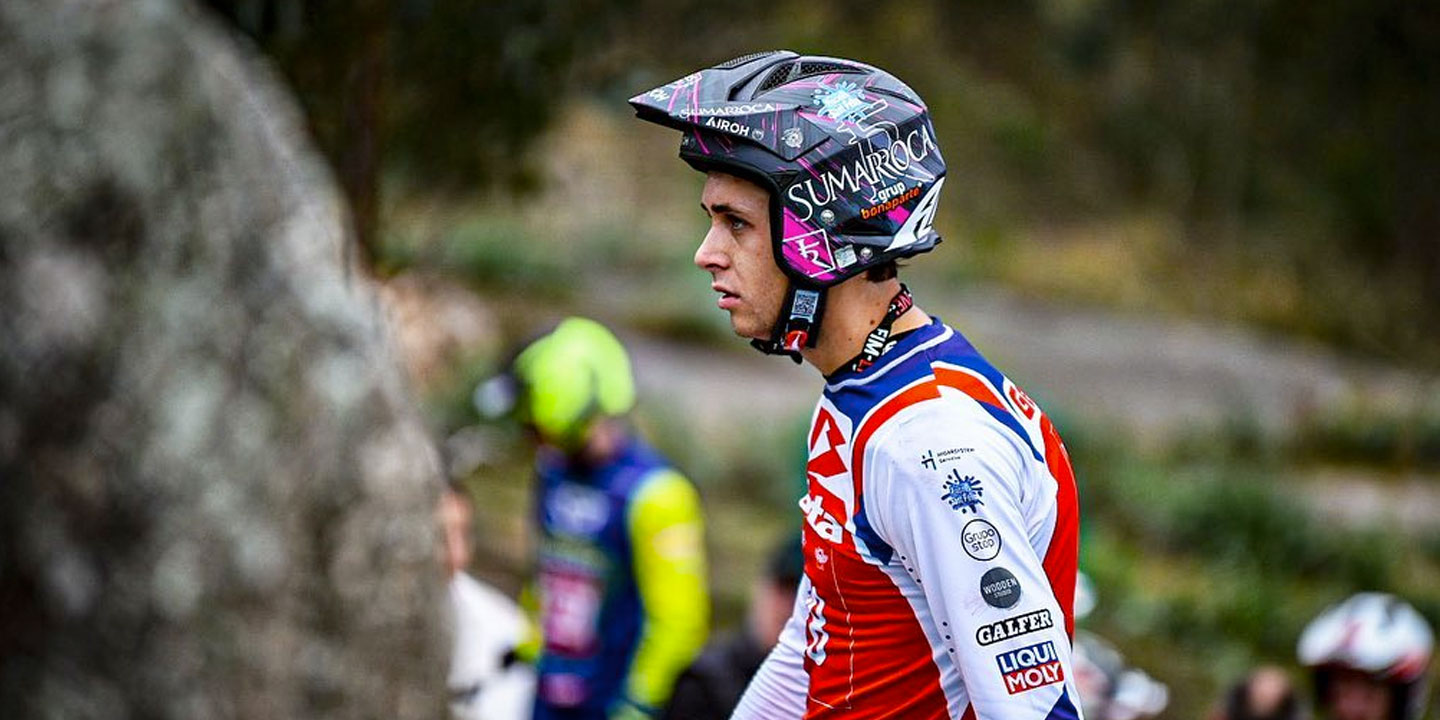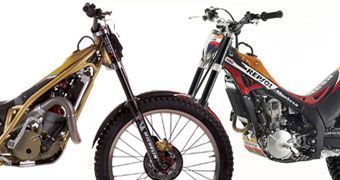
Between the “boom” and the novelty, practically all trial brands opted to market a 4T version. Some, like Montesa, decided to bury forever a winning and well-accepted bike like the Cota 315R; others, such as Sherco, Beta and Scorpa opted for the same path, which is to work on both fronts, although adopting very different paths. Of course, no trial brand sprouted from scratch betting on the 4T, something that is currently happening with the 2T in factories such as Ossa, Fantic and surely JTG.
[Clic aquí para ver todas las fotos de la comparativa]
In trial, within thetop competition, all have abandoned their commitment to the 4T, except Montesa, who remains strong with the Cota 4RT at the top thanks to the hands of an incredible Toni Bou. Cabestany is facing his second consecutive season after his return to the 2.9 2T, although he is a rider who fit well with the powerful 3.2 4T. Scorpa left the top trial competition years ago and only the tail ends of Yamaha in Japan with the great Kuroyama remain. Beta made a feint of betting on the 4T in the trial world championship with Pascuet, but the truth is that the Italian brand has always bet mainly on the 2T.
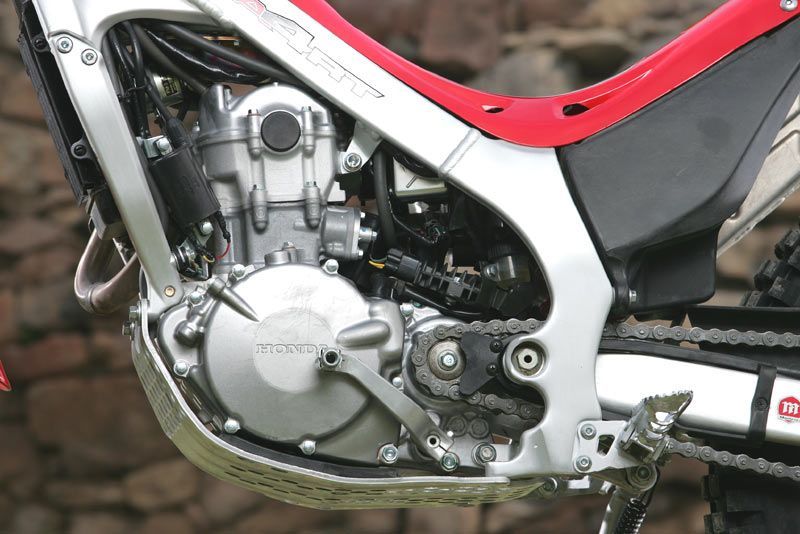
For this report we have selected the two models more representative of both configurations: the Montesa Cota 4RT – the standard version of the one used by Toni Bou – and the Gas Gas TXT Pro – the standard version of the one used by Adam Raga. We’re going to reveal the pros and cons of each setup, so that each fan can draw their own conclusions. Don’t forget that you can comment on the article at the end of it.
Two Options, One Direction
To better understand the differences between the two models, we must go back to their origins. Back in 2001, a very young Adam Raga premiered a prototype of Gas Gas in competition that would soon reach the assembly lines under the 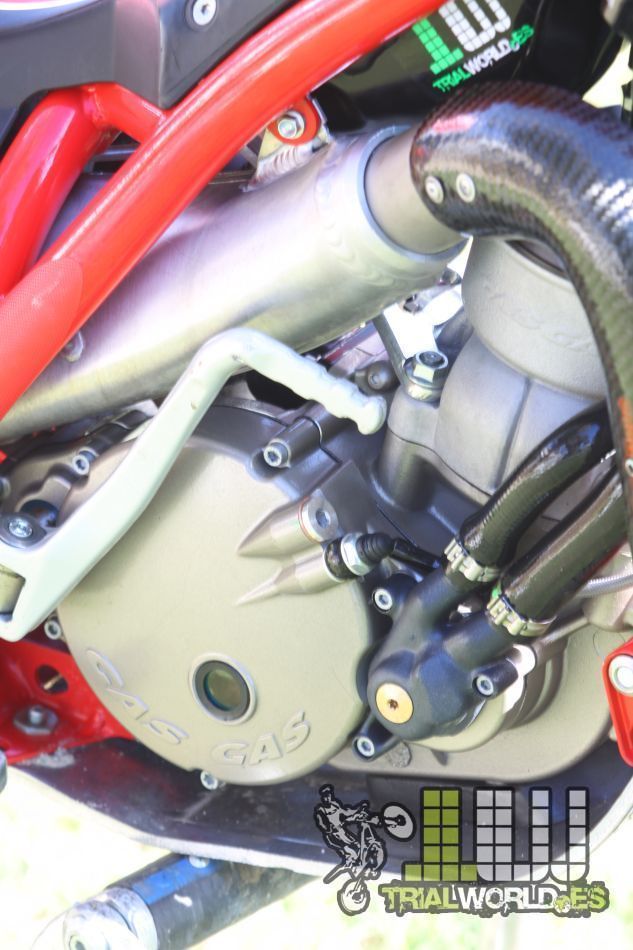
If
When Montesa launched the 4RT, it had been almost two decades since a valve engine had been mounted on a trial bike. The cardiac and versatile two-stroke mechanics had always proved to be the most logical choice for a truly unique specialty. The four-strokes needed, first of all, to create trust and culture among trial users.
Text: David Quer / Photos: DQ & PS / Action: David and Chema Quer
Electronic Fuel Injection
In addition, with the Cota 4RT, electronic injection came to trials. Regardless of its performance, the fact is that the wide range of possibilities of this food system
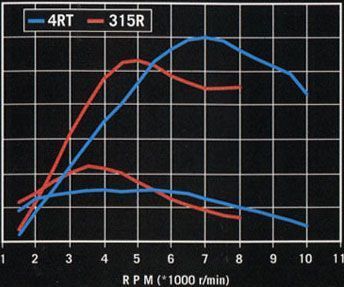
The injection is, in large part, to blame for the fact that the behaviours of both trials are so heterogeneous. In general terms, the answer seems more precise than with the carburetor, however the latter works better at revs below two thousand revolutions. The only point where both mechanics converge is, basically, the displacement, although Gas Gas also offers versions with greater displacement, specifically 272 and 294 cc. For the Montesa, there are cubicage augmentation kits marketed by the auxiliary industry.
Character and versatility
Montesa conceived the Cota 4RT with the average user in mind. That explains why the obsession of the engineers is not to offer a revolutionary product in terms of lightness, but in terms of quality in components and technology. The 4RT loses court to its opponent as the terrain becomes more selective and the room for maneuver is smaller. The cause of this counterpoint is a marked overweight that is around ten kilos -77.6 for the 4RT compared to 68 for the TXT-. However, thanks to an even-handed weight distribution and a brilliant suspension team, the Montesa is more capable of high-level trial than you might expect.
The reason for this lies in the fact that the Cota combines an elastic engine with good torque, a generously long gear ratio and a rather smooth suspension setting. If, on the other hand, we observe more radical geometries, a pointed engine and fast suspensions, we will begin to perceive an unmistakable smell of mixed gasoline that leads us to the TXT “Pro”.
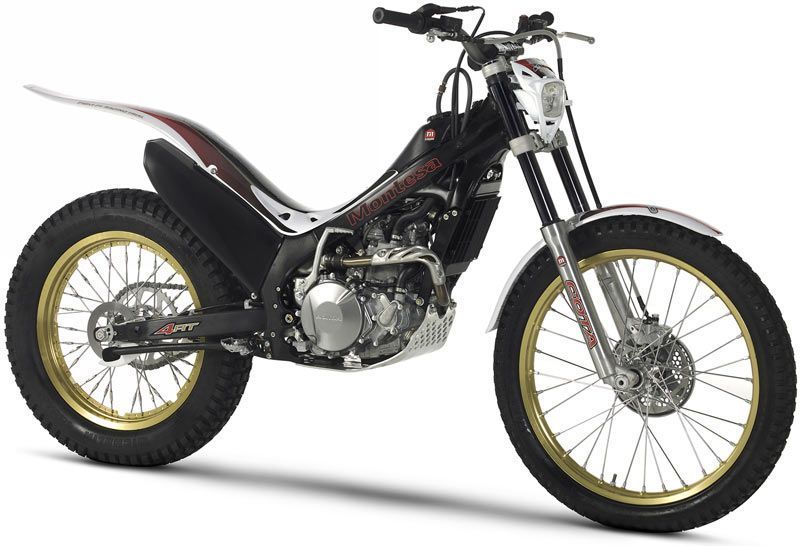
Situating ourselves in the scenario that interests us, the zones, we can see that the same obstacle has never seemed so different. Although the pilot’s technique is obviously decisive, in order to overcome difficulties successfully, it is necessary to know, first of all, the particularities of each model. For more than two decades, we have been applying the trial story of “the higher the revolution, the more power”. Seen in this way, it seemed that the culture of elastic valve motors would have no place in the context of this specialty, however, electronics allow us to conceive as realities what previously seemed like a utopia.
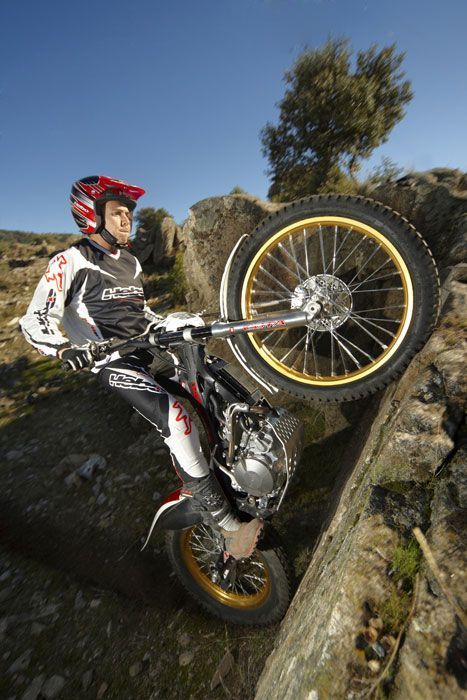
These premises can also be translated into sensations.
Counterpoints
It is enough to ride a few minutes with each bike to realize that the gear ratios are also completely different. This is much longer in the case of the Montesa. It is a motorcycle that, for the most part, asks to be ridden within the zones in first gear. This point contributes to making the Cota 4RT more difficult to drive than its rival. The bike is very loose and, when it comes to very technical areas, it forces you to play a lot with the clutch to get it through the
Drawn. This point also makes driving more demanding. The solution? Two more teeth in the crown, i.e. 43. The improvement is remarkable, basically because the rest of the ratios are used more and the bike does not run as much in the sections. The only counterpoint is that engine braking is also felt to a greater extent.
The Gas Gas is generally easier to drive, especially when compared at first contact. The staggering of this gearbox, rougher and drier to the touch than that of its rival, is perfect for combining purely recreational use with competition.
More equality
thermodynamics
It inherits the scheme of the defunct Cota 315R, which revolutionized the sector with a double-beam chassis built in aluminum and a set of unrivaled suspensions, signed by Showa. This trend continues, although the fruitful work of the Gas Gas engineers with the evolutions of a scrupulously noble and stable tubular chassis, make the TXT a benchmark in the 2011 panorama.
At the front, equality is maximum. Both forks are at an extraordinary level, and, although the morons are quite even, each one has a completely different personality.
Conclusions
In short, these are two disparate models whose conceptions are perfectly valid to please the most exquisite, even if they employ alternative ways. The effectiveness of both concepts depends, first of all, on the scenario and the type of use we are going to give them. Thus, Montesa proposes a less radical and versatile concept, dominated by components of the highest quality and 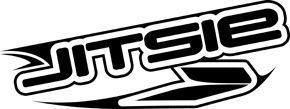
Don’t forget that you can comment on the report in this article. In addition, this topic coincides with our poll of the week, which you can find in the “home” of the website, at the bottom: What type of engine do you prefer to practice Trial?
You will find the photo gallery of the comparison below the technical sheet.
TOKEN
TECHNICAL
|
|
|
|
||
|
|
GAS GAS TXT PRO 250 |
|
||
|
ENGINE |
|
|
||
|
Guy: |
Two-stroke. |
Four strokes. |
||
|
Number of cylinders: |
One. |
One. |
||
|
Refrigeration: |
Liquid. |
Liquid. |
||
|
Bore per stroke: |
76 x |
76.4 x |
||
|
Total displacement: |
272.2 cc. |
249.1 cc. |
||
|
Feeding: |
Dell ́Orto PHBL |
Keihin injection. |
||
|
On: |
Electronic CDI. |
Electronic CDI. |
||
|
Outburst: |
Leverage. |
Leverage. |
||
|
Clutch: |
Multi-disc in oil bath. Hydraulically driven. |
Multi-disc in oil bath. Hydraulically driven. |
||
|
Change: |
Six-speed. |
Five-speed. |
||
|
Trans. primary: |
By gears. |
By gears. |
||
|
Trans. high school: |
By chain. |
By chain. |
||
|
CHASSIS |
|
|
||
|
Frame: |
Simple steel cradle. |
Double beam in aluminium. |
||
|
SUSPENSIONS |
|
|
||
|
Front: |
Conventional Marzocchi fork with 40 mm bars |
Showa conventional fork with 39 mm slashes |
||
|
Route: p> |
|
|
||
|
Back: |
ZF-Sachs monoshock. |
Showa monoshock. |
||
|
Route: |
|
|
||
|
BRAKES |
|
|
||
|
Front: |
A floating disc with a diameter of |
A floating disc with a diameter of |
||
|
Buttocks: |
A floating disc with a diameter of |
A floating disc with a diameter of |
||
|
WHEELS |
|
|
||
|
Tires: |
Aluminum. |
Aluminum. |
||
|
Tyres: |
Michelin Trial Comp. Del.:2,75×21. Rear: 4,00×18. |
Michelin Trial Comp. Del.:2,75×21. Rear: 4,00×18. |
||
|
MEASUREMENTS & WEIGHT |
|
|
||
|
Wheelbase: |
|
|
||
|
Seat Height: |
|
|
||
|
Ground Clearance: |
|
|
||
|
Fuel tank: |
|
|
||
|
|
Empty |
Full |
Empty |
Full |
|
Declared Weight: |
|
|
|
N.D. |
|
Verified Weight |
|
|
|
|
|
POWER & DEVELOPMENTS |
|
|
||
|
Pot. To the clutch: |
16.9 hp at 6.2600 rpm |
18.3 hp at 6,780 rpm |
||
|
Torque to the clutch: |
2.4 mkg at 3,790 rpm |
2.1 mkg at 5,270 rpm |
||
{bonckowall source=”2″ pkey=”album” pvalue=”dqtrialworld” pvalue2=”ComparativeTrial2T4T” }{/bonckowall}
